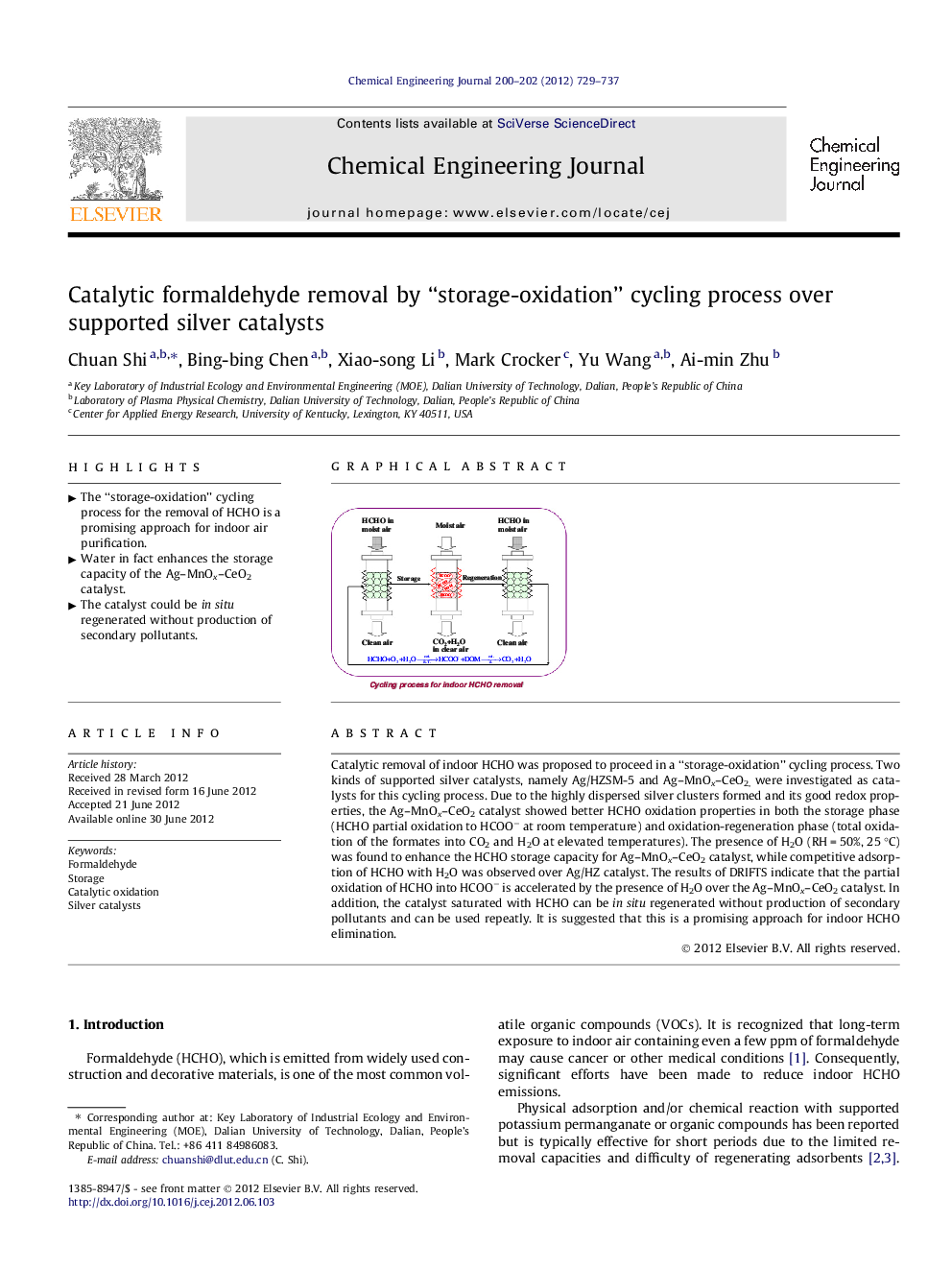| Article ID | Journal | Published Year | Pages | File Type |
|---|---|---|---|---|
| 149587 | Chemical Engineering Journal | 2012 | 9 Pages |
Catalytic removal of indoor HCHO was proposed to proceed in a “storage-oxidation” cycling process. Two kinds of supported silver catalysts, namely Ag/HZSM-5 and Ag–MnOx–CeO2, were investigated as catalysts for this cycling process. Due to the highly dispersed silver clusters formed and its good redox properties, the Ag–MnOx–CeO2 catalyst showed better HCHO oxidation properties in both the storage phase (HCHO partial oxidation to HCOO− at room temperature) and oxidation-regeneration phase (total oxidation of the formates into CO2 and H2O at elevated temperatures). The presence of H2O (RH = 50%, 25 °C) was found to enhance the HCHO storage capacity for Ag–MnOx–CeO2 catalyst, while competitive adsorption of HCHO with H2O was observed over Ag/HZ catalyst. The results of DRIFTS indicate that the partial oxidation of HCHO into HCOO− is accelerated by the presence of H2O over the Ag–MnOx–CeO2 catalyst. In addition, the catalyst saturated with HCHO can be in situ regenerated without production of secondary pollutants and can be used repeatly. It is suggested that this is a promising approach for indoor HCHO elimination.
Graphical abstract.Figure optionsDownload full-size imageDownload as PowerPoint slideHighlights► The “storage-oxidation” cycling process for the removal of HCHO is a promising approach for indoor air purification. ► Water in fact enhances the storage capacity of the Ag–MnOx–CeO2 catalyst. ► The catalyst could be in situ regenerated without production of secondary pollutants.
